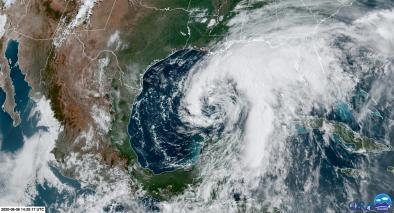Tropical cyclone motion in a changing climate
Study key findings
- Future warming may drive a shift in certain wind patterns in the midlatitudes, causing cyclones to further slow down.
- This slowing, combined with more intense future storms, is likely to increase hurricane-related damages "in some of the most populated coastal regions,"
Study abstract
The locally accumulated damage by tropical cyclones (TCs) can intensify substantially when these cyclones move more slowly. While some observational evidence suggests that TC motion might have slowed significantly since the mid-20th century, the robustness of the observed trend and its relation to anthropogenic warming have not been firmly established. Using large-ensemble simulations that directly simulate TC activity, we show that future anthropogenic warming can lead to a robust slowing of TC motion, particularly in the midlatitudes. The slowdown there is related to a poleward shift of the midlatitude westerlies, which has been projected by various climate models. Although the model’s simulation of historical TC motion trends suggests that the attribution of the observed trends of TC motion to anthropogenic forcings remains uncertain, our findings suggest that 21st-century anthropogenic warming could decelerate TC motion near populated midlatitude regions in Asia and North America, potentially compounding future TC-related damages.
Related Content



